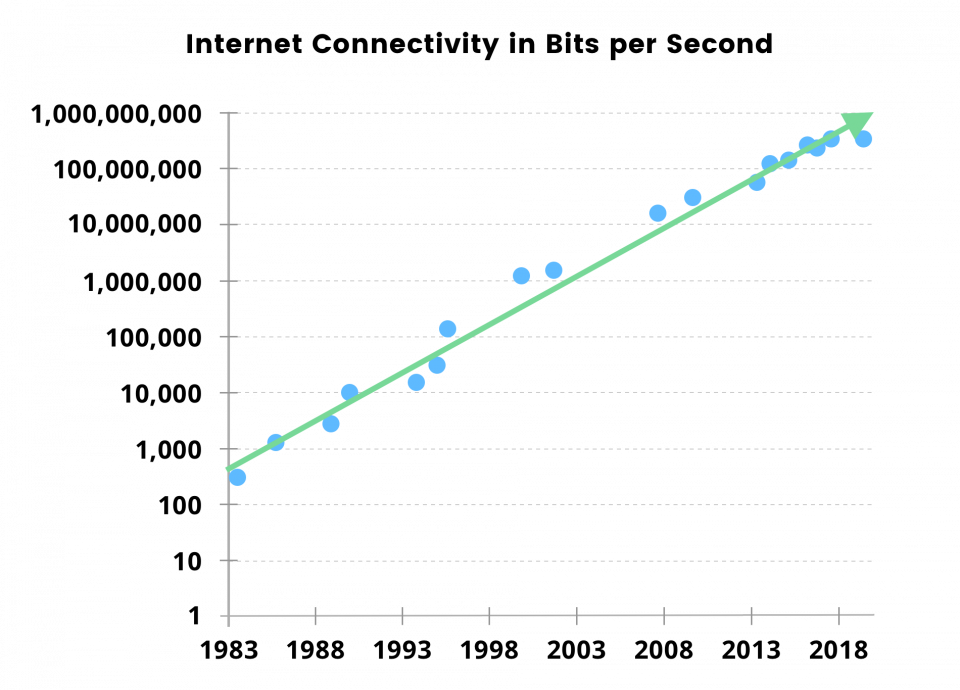Low Latency Series Part 1: Introduction
For many years, the performance of a network was defined by one metric: speed or bandwidth. We can see this clearly in the evolution of networks too. Every article describing the evolution of the internet and network speeds will show graphs of internet speed evolutions like this:

This doesn’t mean latency was never a concern. Even IPv4 already contains features to handle latency. Applications can use the TOS bits to indicate if latency or packet loss are more important than bandwidth. But it are the underlying protocols which must support these requirements. This is our focus for this blog series.
Lately, we see a shift in focus from speed towards latency. Latency had already some moments of fame, e.g. when deploying voice services. But has become important again due to different reasons:
- Video calling and gaming are very important and growing markets, but can suffer very hard from latency and variation on latency. Most frustration on network issues by end users are reported while gaming.
- The gaming business is changing towards cloud based gaming. Cloud gaming requires a higher bandwidth and low latency connections. It also pushes the demand for a universal experience on mobile, laptops, consoles, …
- Virtual reality, Augmented reality, Mediated reality are new services with strict requires on latency and jitter. E.g. a remote surgery can’t suffer from high latency and jitter.
- All major access network technologies are working on reducing latency. This introduces a kind of competition to stay relevant in the future.
- SLAs for business customers contain QoS requirements which include bandwidth and latency.
- When businesses move more and more data and applications to the cloud, the latency over the internet connection is expected to be in same range as on a current local network.
In this blog series, we will cover the different access technologies and their enhancements towards latency. Among others, we will cover Wi-Fi 6 and Low Latency DOCSIS and their enhancements towards latency. Besides the access network technologies, we will also discuss innovations like L4S and QuiC. We will also cover different testing approaches and will show how you can monitor latency in your network.
Interested in following this series on Low Latency?
Sign up for our newsletter here!
Can we help you inprove your network, service, knowledge, tools?
Contact us here!



























